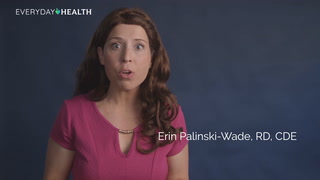
“Carbohydrates provide energy to your body. But not all carbohydrates are created equal. For people with diabetes, choosing whole, unprocessed carbohydrates over refined options and simple sugars is key,” says Erin Palinski-Wade, RD, CDCES, a nutritionist and the author of 2 Day Diabetes Diet. “These carbohydrates are rich in essential nutrients as well as fiber, which can reduce the risk of disease such as heart disease and certain cancers, as well as help to promote a healthy body weight.”
The recommended amount of carbohydrates differs for everyone, and depends on factors like how much you exercise, body size, age, and sex, says Palinski-Wade. It should also take into account your blood sugar goals and any medication you’re taking.
Dairy Provides Key Nutrients, Such as Calcium and Protein

Opt for non- or low-fat dairy, which is labeled as skim, 1 percent, or 2 percent milk fat, Palinski-Wade says. “Full-fat dairy contains higher levels of saturated fat, which can not only increase the risk of heart disease and inflammation, but diets rich in saturated fat have also been associated with a higher level of insulin resistance,” she adds.
Some healthcare providers may recommend nonfat dairy for people with diabetes because it’s lower in calories and fat. Talk to your healthcare team to find out which type of dairy is best for your meal plan and blood sugar goals.
Diabetes Diet Tips for the Carb Avoider

Next up video playing in 10 seconds
Beans Are a Fiber-Packed Source of Carbohydrates

Beans, such as black and kidney beans, may be higher in carbohydrates compared with many other plant sources, but they’re recommended when building your diabetes diet. “I do recommend people with diabetes consume beans regularly, since eating high-fiber foods such as beans can have a positive impact on overall health and body weight,” says Palinski-Wade.
One reason they’re healthy carbs: filling fiber. Take black beans, for example. A half cup has about 109 calories, 7.3 g of protein, 8.3 g of fiber, and 19.9 g of carbs.
Many Fruits Are High in Fiber

Berries Are Lower in Sugar, but High in Flavor

Vegetables Offer Important Nutrients and Help You Feel Full

Whole Grains, Pasta, and Rice Are Bigger Sources of Carbohydrates

Whole-Grain Breads Can Fit Into a Diabetes Diet

Opting for whole-grain bread for that piece of toast with breakfast and your sandwich for lunch is an easy way to include whole grains in your diabetes diet. If you’re going for a sandwich, choose thin sandwich bread, reduced-sodium deli meat (turkey, chicken, or roast beef), pile veggies on top, and add a squirt of mustard. Or make it a meat-free meal and replace the deli meat with hummus.
The Takeaway
- You don’t need to avoid carbs entirely when following a diabetes diet. Instead, prioritize those that are packed with fiber, protein, and vitamins and minerals. For example, aim to swap refined grains, like white pasta and rice, for whole grains, like whole-wheat bread, barley, and quinoa.
- When creating a nutritious meal with healthy carbs, include saturated fats, protein, and more fiber on your plate, too. Doing so can help prevent post-meal blood sugar spikes. These foods take longer for your body to digest, slowing the absorption of sugar in your bloodstream.
- Be sure to consider portion sizes when eating carbs. While beans are rich in filling fiber, they can still be high in carbs. So, consider your carb goals before dishing up a bigger portion.
Resources We Trust
- Cleveland Clinic: Carbs Aren’t the Enemy: Learn to Spot Healthy Carbs (and Why They Matter)
- Mayo Clinic: Whole Grains: Hearty Options for a Healthy Diet
- Centers for Disease Control and Prevention: Fiber: The Carb That Helps You Manage Diabetes
- American Diabetes Association: Carb Counting and Diabetes
- National Institute of Diabetes and Digestive and Kidney Diseases: Healthy Living With Diabetes
Additional reporting by Madeline R. Vann, MPH.

